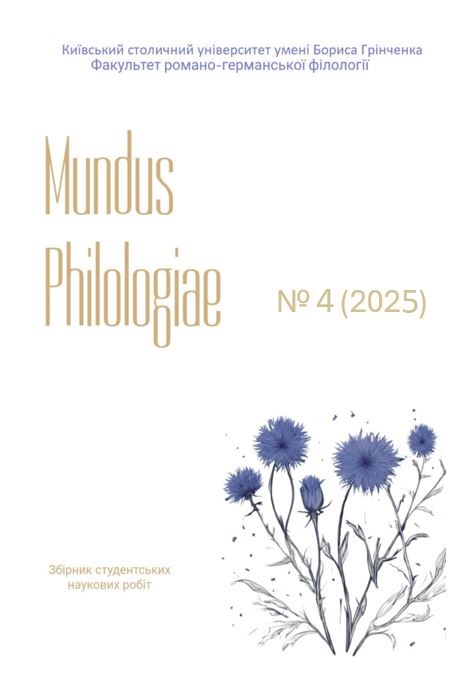KATE MIDDLETON`S AND MEGHAN MARKLE`S IMAGE IN THE MEDIA: CORPUS AND PRAGMATIC ANALYSIS
Keywords:
corpus analysis, pragmatic analysis, speech act theory, media discourse, public portrait, biases, Meghan Markle, Kate MiddletonAbstract
This article presents the study of lexis in the articles about Katherine, Princess of Wales`s and Meghan, Duchess of Sussex`s relationship history with their husbands. In order to conduct the analysis, the text analysis software Sketch engine was used, which allows multiple tools, such as corpus-derived summaries, collocation search, keyword extraction, etc. These tools, alongside with the pragmatic analysis, have provided the opportunity to come up with the wholesome portrait of each of both Meghan Markle and Kate Middleton in the media. The purpose of this paper is to study the lexical features and the frequency of use of certain words in the articles published by various media resources, such as BBC, The New York Times, Cosmopolitan, Vogue, Daily Mail, People, etc. to mark the beginning of couples` relationship (90 articles were analyzed). After conducting the corpus analysis, we focused on the verbs used in the articles and structured them with the help of the pragmatic analysis, enabling to see the differences in the linguistic choices of the media, contributing to the social bias regarding these public figures. The pragmatic analysis shows that the articles about both Kate and Meghan share similar assertives (say, know, see, look, think, share, include, keep, accord, use, feel, seem, reveal) and directives (ask, tell, announce, want, meet, follow), however, expressives and comissives differ. Most commonly used expressives in the articles about Katherine include such verbs as enjoy, celebrate, feel, help, whereas the expressives in the articles about Meghan are the following: feel, love, celebrate, hope. These difference contributes to the social bias, portraying Kate as the royal family member-to be, who is committed and actively engaged and ready to assist in the first place, whereas in the article`s about Meghan, her emotiveness is emphasized and mission alongside with the future duties are overshadowed. Another notable finding concerns the commissive verbs used in media coverage. In articles about Katherine, the most frequently used commissives include leave, date, marry, and join, whereas in those about Meghan, they are date, work, write, and step. This distinction highlights differences in their backgrounds and the ways their life purposes are framed—Kate’s coverage emphasizes relationships and integration into the royal family, while Meghan’s focuses more on her professional career and personal initiatives. The findings allow us to trace changes in lexical preferences used by the media to create the primary public images of the women, depicting how one part of speech solely can shape the public portrait of a person.
Keywords: corpus analysis, pragmatic analysis, speech act theory, media discourse, public portrait, biases, Meghan Markle, Kate Middleton




